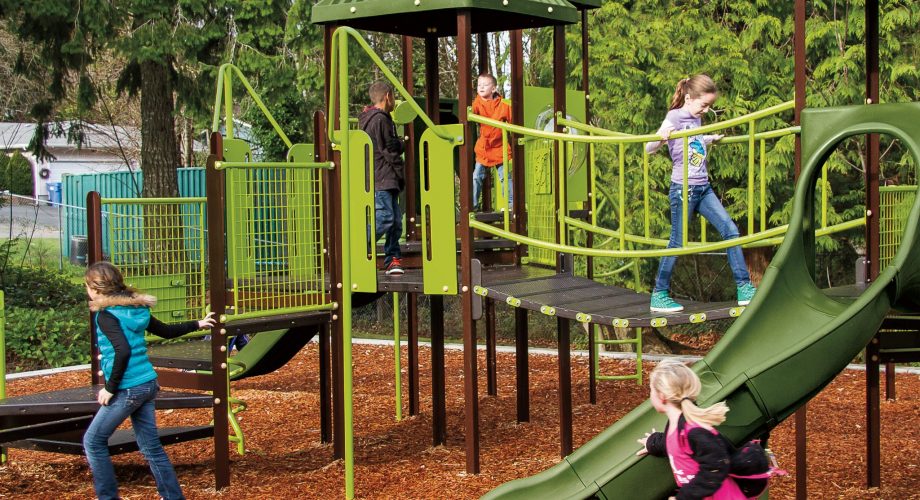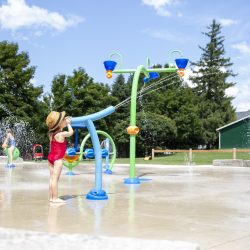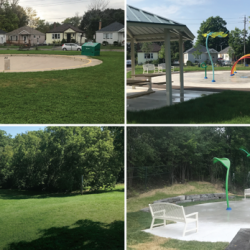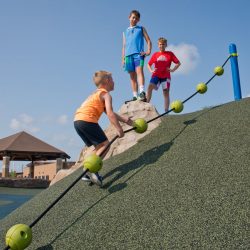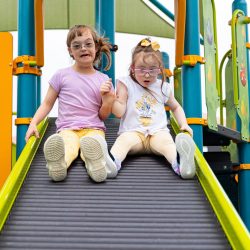2020 CSA Standards for Playground Equipment
Since the 2014 CSA Standard, a number of important changes and improvements have been made to ensure safety and compliance in the playground and equipment industry. In an effort to assist our clients who are navigating these changes, we have highlighted 10 of the noteworthy updates to keep in mind for future projects!
#1: The Title Change
A new name has been selected for this industry document, from “Children’s Playspaces and Equipment” to “Children’s Playground Equipment and Surfacing”. This is a great title change, as it provides a more accurate description when it comes to reading the full document.
#2: Age Groups
This is a great step in the right direction, as specific age groups can limit who can lawfully use the playground. User age groups have now been created as a guideline. By changing this, childcare facilities that have children under the age of 18 months, that are developmentally ready to use the play space equipment, can make the call whether or not the child is able to play. The previous age ranges were never intended to be a strict rule, but with this change, there is some more flexibility on the owner and/or operator of the space.
#3: Performance Requirements – Testing Parameters
New limits have been placed on the testing parameters that need to take place within a playspace. Anything within the protective surfacing zone must be tested, but only to a max height of 2.1 meters above the highest designated play surface. This change is to allow flexibility in design. Anything higher than 2.1 meters above the highest designated play surface will now be outside the testing space.
#4: Performance Requirements – Swing Seats
Enclosed swing seats and seats designed for compliance with Annex H have an exemption from head and neck entrapments. This will allow for better design to ensure a more comfortable and ergonomic swinging experience. They are also now exempt from looping. This allows the ability to have a 5-point harness to enable better support for users that require it, while the seat remains in compliance.
#5: Performance Requirements – Head and Neck Testing
Partially bounded head and neck entrapment testing is exempt up to 610mm (24-in) above the ground. This will assist with angles formed by rope-net climbers but is also to harmonize with the US Standard ASTM F1487 (which is equivalent to our CSA Z614).
#6: Performance Requirements – Uncapped Tubing
Uncapped tubing is now permitted as long as it is required as part of the play event. In previous versions of the standard, all open tubing had to be capped. This made it very difficult to have musical instruments or sand chutes in our playspaces and have them comply with the CSA Standard.
#7: Performance Requirements – Musical Instruments
Musical instrument panels are also exempt from the large protrusion gauge in an effort to be able to have mallets and/or striking objects at our instruments or the proper tubing size to create the desired sound. In the 2020 version of the CSA Standard, these elements are only exempt from the large protrusion gauge, the small and medium ones still apply. Also, the mallets are now able to be attached to the musical instrument panel by a cable that is no longer than 610mm (24 in) long and the attachment point is to be no higher than 685mm (27 in) above the ground.
#8: Performance Requirements – Play Surface Testing Device
There is a new designated play surface testing device as well as new procedures on how to accurately test for a designated play surface. This was developed to assist with standardizing and eliminating the interpretation of designated play surfaces.
#9: Equipment
Owners, operators, and manufacturers can now use a Hazard Identification and Risk Assessment (HIRA) tool (found in Annex J) to evaluate new equipment not currently contemplated by the current CSA Standard. This will allow for new equipment to be fairly assessed as to the risks and hazards instead of being deemed “compliant or non-compliant” because it doesn’t fit within the current equipment listing in the existing standard. This creates an opportunity for designers to continue being creative in their work.
#10: Mesh Structures
There have been some changes to 3-dimensional mesh structures and some additional figures to provide a visual in an attempt to be more congruent with modern designs.
You can view the full update here to ensure you are up to date on all the latest changes and adaptations to the 2020 CSA guidelines. Every year brings new developments to our industry, and at ABC Recreation, you can rest assured our team adheres to all CSA standards when designing any play space.

